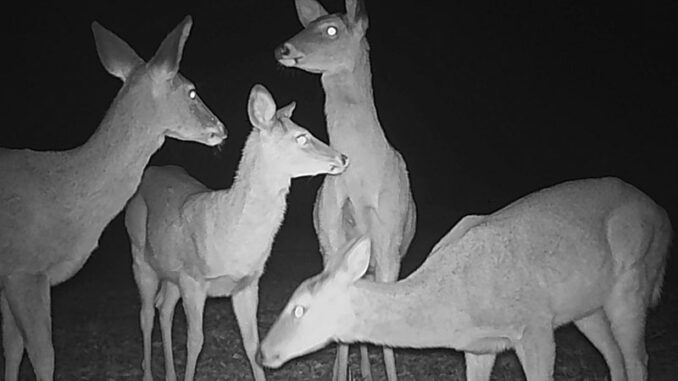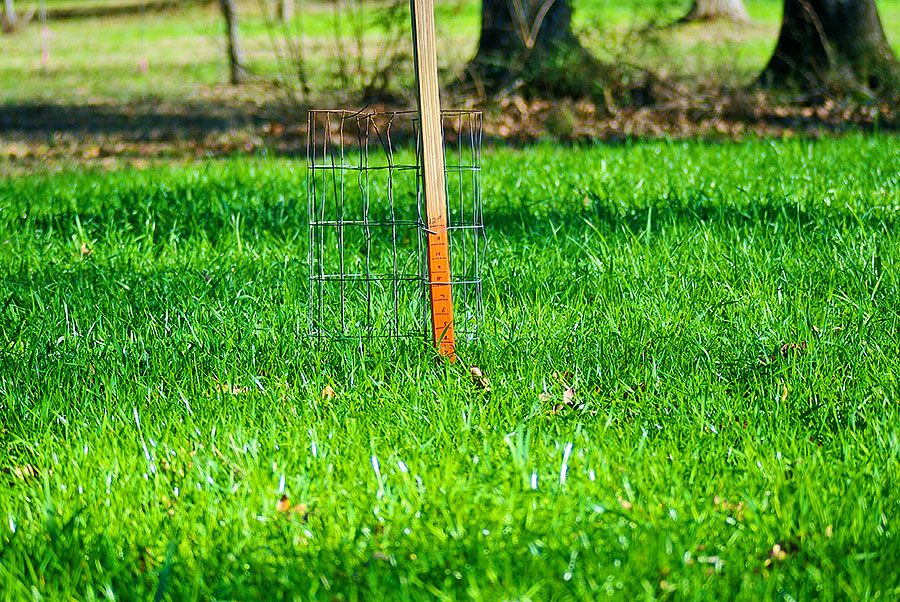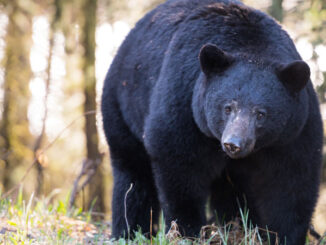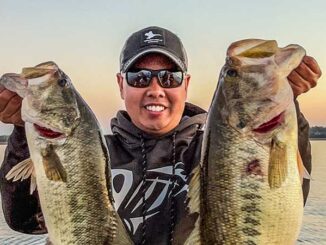
If your food plots look like a putting green at the end of the deer season, you may have wasted your seed money and should have spent your money on bullets instead.
There are two reasons hunters/managers plant food plots; one is to attract deer for hunting and the other is to supplement the native forage.
A good program can accomplish both objectives. If you don’t have much money or equipment, planting and fertilizing rye grass will attract deer for hunting during the season. Rye grass is not as nutritionally beneficial as other forages, but deer will be attracted to it and will eat it. However, it should be noted that a sack of rye grass cost more than a sack of wheat seed this past season. Based on grass seed head production during the spring, if there are more rye grass heads than seed heads of wheat, deer are eating the wheat more than the rye grass.
During the 2022-23 deer season, I planted additional wheat seed in an acre patch at the end of December. In a few weeks, the wheat plants were 4-6 inches tall, but by the end of January, there wasn’t much wheat in the patch, and in the spring the patch was mainly clover and rye grass, which is just fine for turkeys.
I generally plant mixtures of clover species including red, crimson and white, along with wheat and oats. The seed companies always put rape seed and winter peas in the mix. Deer will eat the brassica plants and the winter peas, but generally the peas are eaten up and I don’t see many peas in the spring forage.
It is always a good idea to set up a wire cage that keeps the deer from eating the plants. This gives you an idea of your planting success. At the end of the 2022-23 deer season, the forage in my cage on a one acre plot was a foot tall, while the forage in the patch was about an inch tall. Deer had been over-browsing the patch (pigs will eat the forage also) and so my goal of providing adequate forage in the patch during the season failed. We should have shot more deer in that patch and reduced the browsing pressure.
Not what I desired
I also saw that the clover forage in the patch wasn’t what I desired. I try to have good clover production for spring turkey hunting. Consequently, I planted more clover seed in late January and that proved to be a plus and increased the clover forage for the turkeys and the deer during the spring when quality forage protein is needed by the deer. This past planting season I planted additional clover seed at the first planting and that maintained a good stand of clover forage in the patch.
The 12 inches of forage in the excluder cage got my attention and made me start thinking about total forage production and whether or not my plantings were working, attracting deer and supplementing the native forage. No doubt deer were coming to the patches since they were eaten up, but I was not doing much to provide the daily forage needed by a deer. The only way to measure forage production was to measure the plant height throughout the patches. Using the 12-inches of forage production in the cage as my control, I produced a graph of what two acres of plantings looked liked at the end of the deer season. It is obvious the deer had over-browsed my plantings. If there were no deer feeding in the patches, the forage growth throughout the patch would be 12 inches in height. The graph shows that 90 percent of this patch had been browsed by deer.
 I compared these plantings with the one acre dove field planting, which is near the house, humans, dogs, an outside security light, and everything else that disturbs deer. I plant the dove field in early summer with seed to attract doves in the fall and then plant with winter forage for the deer. Deer browsing was moderate in the upper part of the patch but in the lower part where the disturbance is much less, browsing was about as heavy as the other plantings. Again, using the 12 inches of forage in the excluder cage as my control, I produced a graph of the dove field browsing and 60% of the patch had been eaten.
I compared these plantings with the one acre dove field planting, which is near the house, humans, dogs, an outside security light, and everything else that disturbs deer. I plant the dove field in early summer with seed to attract doves in the fall and then plant with winter forage for the deer. Deer browsing was moderate in the upper part of the patch but in the lower part where the disturbance is much less, browsing was about as heavy as the other plantings. Again, using the 12 inches of forage in the excluder cage as my control, I produced a graph of the dove field browsing and 60% of the patch had been eaten.
Forage species composition was much better in the dove field than the other sites. I did not do any supplemental seeding in the dove field and the clover production in the dove field during the spring was excellent. I am seeing the same thing this year.
Clover growth
I base the clover growth on the size of the plants at the end of the deer season in January. A clover stem has a leaf with three leaflets; if the entire leaf with leaflets is smaller than a penny, browsing has been heavy. If one leaflet is as big as a penny, the browsing has been moderate. Small clover plants require more time to recover from the over-browsing. I like to have clover plants with big leaflets for the turkey season. If the toms don’t respond to the calling, they are always looking for food!
Another indication that your plot has been over-browsed is the lack of forage species present in the plot and the presence of native species such as annual blue grass, chickweed, henbit, sticker weed and curly dock. These plant species are always present, but if you have a good stand of forage species, they will prevent these native species from becoming dominant. The lack of forage species means more space for the native plants, and these can quickly become dominant in the plot in late winter.
I use a small excluder cage with a ruler to measure the forage height at the various sites. I will take several measurements and then derive an average height for the site. The literature says that sheep and goat pasture should maintain a minimum 5-inch forage height. There is not much in the deer literature about forage height in green patches, but from what I have seen the past two years, patches should maintain 3-5 inches of forage height to provide deer with daily nutrition. If this is not being accomplished, then the browsing pressure is too high and more deer need to be removed from the landscape.


